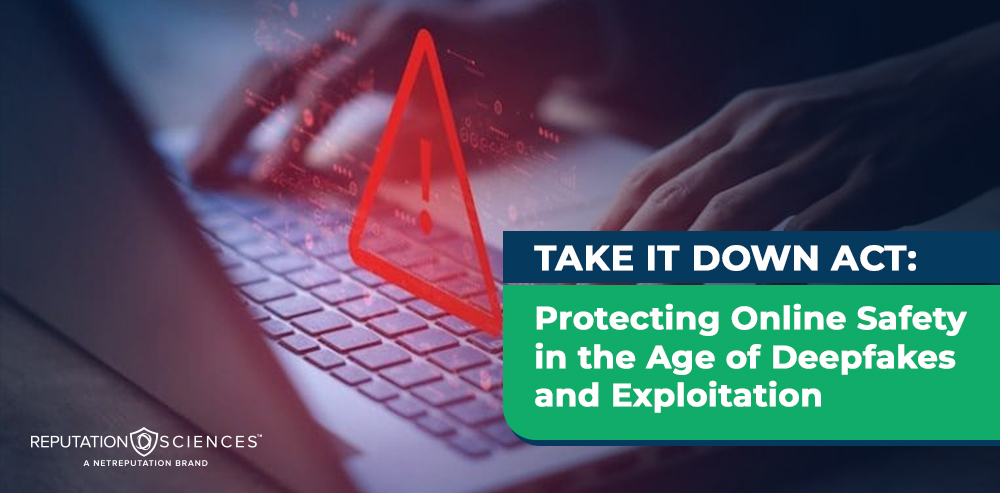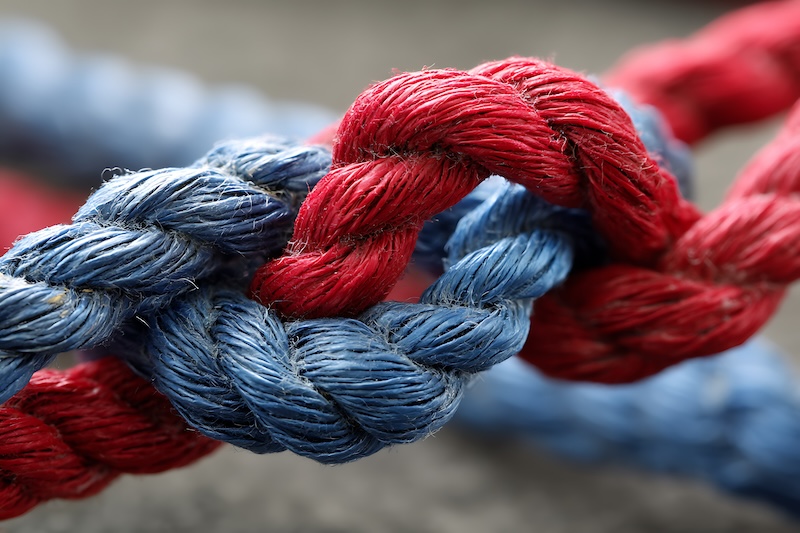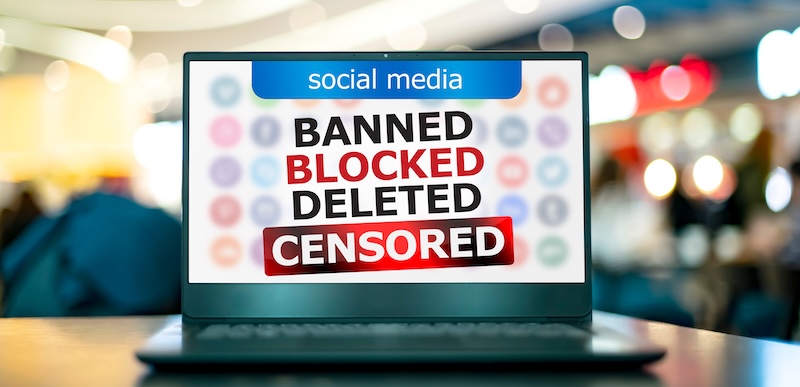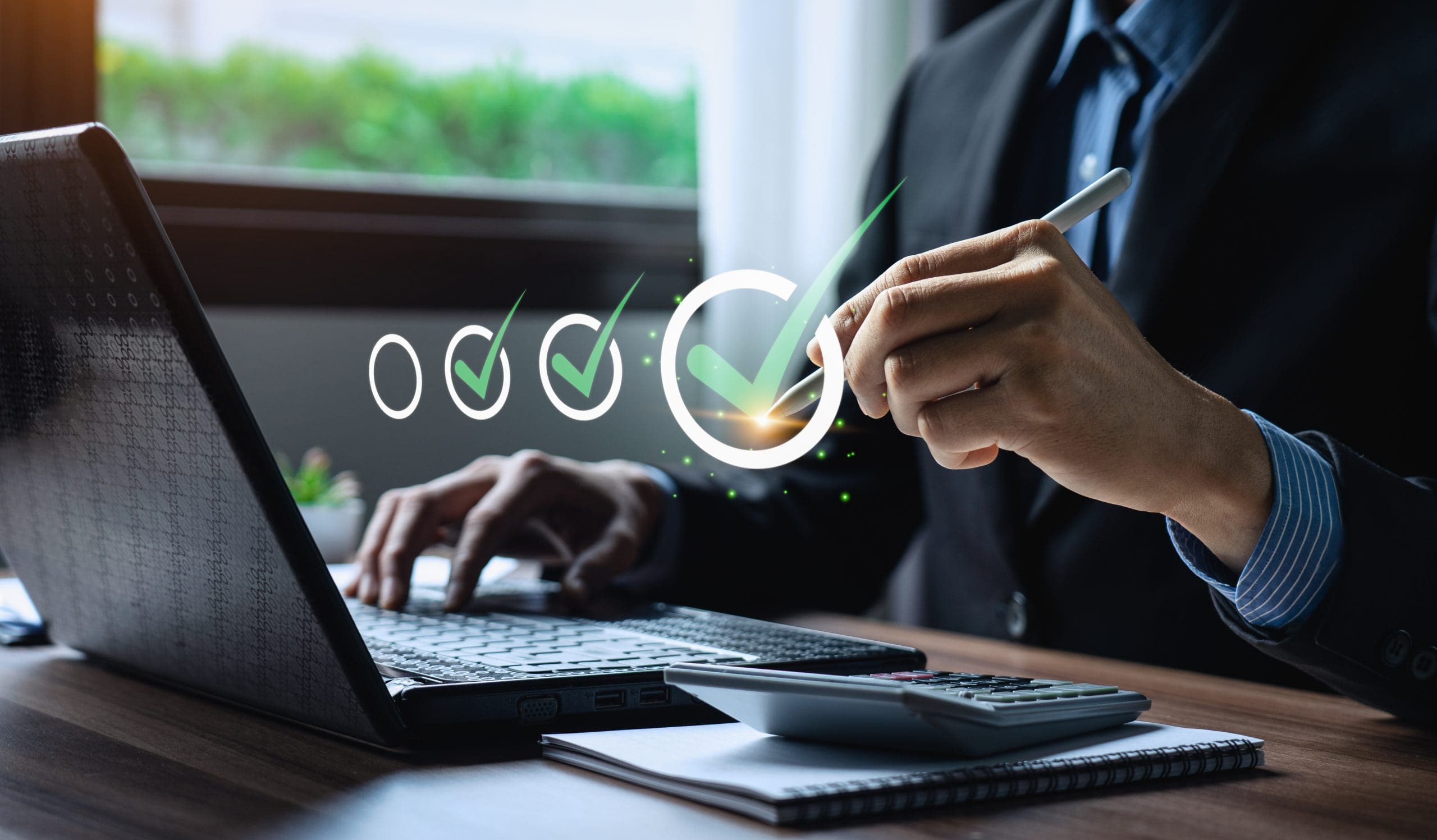TAKE IT DOWN Act: Protecting Online Safety in the Age of Deepfakes and Exploitation

This article discusses the TAKE IT DOWN Act. We’ll go over what it means for online safety when you’ve been the victim of an attack.
When it comes to online reputation management (ORM) and the Take It Down Act, which went into effect on May 19, 2025, both have the overarching goal of protecting people from damaging online content, including revenge porn.
If harmful content ruins your digital presence, it can affect your relationships, career and future. When this happens, the main priority is to restore the victim’s reputation — along with their privacy — as quickly as possible.
Today, reputation managers can use the Take It Down Act to their advantage. It helps escalate removal requests and suppress malicious content.
The way you’re perceived online matters. A poor online reputation can damage your personal life and your professional opportunities. Get in touch with us today at (844) 458-6735 to discuss online safety and reputation in today’s digital world.
An Overview of the Take It Down Act
President Trump signed the Take It Down Act into law on May 19, 2025. The acronym stands for Tools to Address Known Exploitation by Immobilizing Technological Deepfakes on Websites and Networks Act. The legislation became active as soon as the act was signed.
In the digital world, online safety is a huge concern. The purpose of the act is to crack down on the publication and spread of non-consensual imagery generated authentically or by artificial intelligence.
An article published in 2021 in the Journal of Interpersonal Violence, titled Personality, Attitudinal, and Demographic Predictors of Non-consensual Dissemination of Intimate Images, found that more than 28% of undergraduate students were the victims of nude or sexual pictures distributed without their consent. “Revenge porn” is another term for such content.
If an individual or platform continues to post or share the content after they receive a removal request, they could face penalization. Removal of the content must occur within 48 hours of receiving the request from the victim. Penalties include fines and prison time.
Which Intimate Images Need To Be Removed Following Takedown Requests?
In order to meet removal requirements, the non-consensual intimate imagery has to meet the following criteria, according to the Take It Down Act:
- “an adult subject where publication is intended to cause or does cause harm to the subject, and where the depiction was published without the subject’s consent or, in the case of an authentic depiction, was created or obtained under circumstances where the adult had a reasonable expectation of privacy; or
- a minor subject where publication is intended to abuse or harass the minor or to arouse or gratify the sexual desire of any person.”
The online safety act is bipartisan legislation (meaning it has support from both political parties). It was introduced by U.S. Senator Amy Klobuchar, a Democrat, and U.S. Senator Ted Cruz, a Republican.
Covered Platforms Under the Take It Down Act
In the Take It Down Act, covered platforms meet the following criteria:
- Online or mobile application, online service, or website
- The platform “primarily provides a forum for user-generated content, including messages, videos, images, games, and audio files,” OR
- “[It] is in the regular course of trade or business of the [platform] to publish, curate, host, or make available content of nonconsensual intimate visual depictions.”
Covered platforms do not typically include email services or broadband providers, for example.
Notice-and-Removal Process
Online platforms have one year from the signing of the bill to create and post their notice-and-removal procedure. This means the deadline is May 19, 2026, which should be enough time for online platforms to make reasonable efforts to comply.
The procedure must be easily accessible to the public. For example, users can access it via a public web page on the website with a link clearly labeled in the footer. Also, it must clearly explain the removal request process.
What if a covered platform doesn’t comply within 48 hours? It will be in violation of the Federal Trade Commission Act, also referred to as the FTC Act. This means that they could be subject to enforcement from the Federal Trade Commission.
Protecting Good Faith Efforts
There will be situations when content is reported as including non-consensual intimate images, the covered platform removes it, and the content creator takes action because the content was actually legal. The Take It Down Act provides protection for covered platforms acting in good faith. The covered platform will not be liable if the removed visual depiction was actually consensual.
Support for the Take It Down Act
Following the signing of the bill, both Senator Klobuchar and Senator Cruz made supportive statements about staying safe online:
- Senator Klobuchar: “We must provide victims of online abuse with the legal protections they need when intimate images are shared without their consent, especially now that deepfakes are creating horrifying new opportunities for abuse.”
- Senator Cruz: “Predators who weaponize new technology to post this exploitative filth will now rightfully face criminal consequences, and Big Tech will no longer be allowed to turn a blind eye to the spread of this vile material.”
The act also had the support of First Lady Melania Trump, who helped push it through Congress. During a Capitol Hill roundtable in March 2025, First Lady Melania Trump said the following:
“It’s heartbreaking to witness young teens, especially girls, grappling with the overwhelming challenges posed by malicious online content, like deepfakes. This toxic environment can be severely damaging. We must prioritize their well-being by equipping them with the support and tools necessary to navigate this hostile digital landscape. Every young person deserves a safe online space to express themself freely, without the looming threat of exploitation or harm.”
Our team of ORM experts can help you create the online presence you’re after. Contact us at (844) 458-6735 for more information.
Risks of the Take It Down Act
The act has support from both the Democratic and Republic parties. However, it’s not without its criticisms:
- The act’s broad language could cause censorship issues. This is particularly concerning when it comes to LGBTQ content and legal pornography. (Source: AP)
- There’s now a route to manipulate platforms and websites to remove lawful free speech. (Source: Electronic Frontier Foundation)
- The takedown provision in the act is susceptible to misuse. It could even cause more harm to victims. (Source: Cyber Civil Rights Initiative)
If you need online presence safety tips or advice for building your reputation in the online world, get in touch with us at (844) 458-6735 today. It’s possible to share personal information online while protecting your privacy.
Safety Tips and Next Steps To Protect Your Digital Presence
There are a number of ORM strategies to build or repair your digital footprint. Here are just a few of them:
- Regular monitoring for new content and mentions about you online
- Suppressing negative content through targeted SEO strategies
- Creating positive content to further shape your online narrative
By staying on top of what’s posted about you — both by monitoring online content and generating your own — you’ll know exactly when something harmful goes live and who can gain access to it.
Additionally, when it comes to the times when you choose to share personal information online, be thoughtful and purposeful about it. Always assume that anyone will be able to gain access to what you post, even if you think it’s going on a private social media account. Nothing in the online world is ever truly private.
With these safety tips and tools, you’ll be able to notify social media sites and platforms about content you need removed. If the content fits the requirements of the act, it will be gone within 48 hours, unless the person who posted it is willing to face legal consequences.
Recap of the Take It Down Act
The purpose of the Take It Down Act is to protect victims and hold perpetrators accountable when non-consensual intimate images end up on social media platforms and other online outlets. Once the Take It Down Act was signed by President Trump, it became a federal crime to accidentally or knowingly publish authentic or computer-generated non-consensual intimate images and not remove them within the 48-hour time frame.
There are concerns about lawful speech and the impact on rights by removal procedures and requirements under the Take It Down Act. However, it may also help victims maintain their dignity online after being the target of revenge porn, deepfake image abuse and other such content.
Ultimately, the reason the Take It Down Act has received bipartisan support is because many are in agreement that critical legislation is needed to empower victims and fight back against revenge porn.
A Balanced Take on ORM and the Take It Down Act
The Take It Down Act has certain benefits that will be helpful to a number of people. These include swift recourse when harmful content is posted online.
On the other hand, oversensitivity to online content could result in unfounded removal requests being submitted and even followed by webmasters who are worried about the repercussions should they not comply.
At ReputationSciences.com, we work with clients who are ready to create, grow or repair their digital reputation. Whether you’re prioritizing your personal or professional online reputation, our team of experts and tailored services can help. Call us at (844) 458-6735 today to speak with a specialist about maintaining your dignity online.





